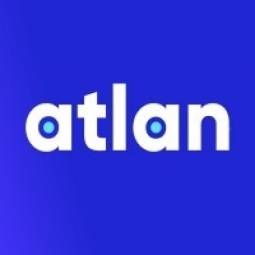Technology Category
- Application Infrastructure & Middleware - Data Exchange & Integration
- Application Infrastructure & Middleware - Middleware, SDKs & Libraries
Applicable Industries
- Buildings
- National Security & Defense
Applicable Functions
- Quality Assurance
- Warehouse & Inventory Management
Use Cases
- Inventory Management
- Object Detection
Services
- System Integration
- Testing & Certification
About The Customer
Funding Societies | Modalku is a licensed digital peer-to-peer (P2P) lending platform in South East Asia. The company is subject to several regulatory and compliance requirements which factor into its data strategy. The company recognizes the increasing value of data and its potential to provide significant competitive advantages in the FinTech world. However, the company also recognizes the challenges associated with data governance, including understanding and classifying data, applying flexible governance and security policies, and integrating across different applications.
The Challenge
Funding Societies | Modalku, a licensed digital peer-to-peer (P2P) lending platform in South East Asia, faced several challenges related to data governance due to its regulatory and compliance requirements. The company recognized the increasing value of data and its potential to provide significant competitive advantages in the FinTech world. However, without high-quality data and upward reporting of meaningful management information, the company was unable to identify and monitor risks or understand the performance of various business functions. The company faced daily operational and regulatory challenges, including understanding and classifying data, applying flexible governance and security policies, and integrating across different applications. The company also needed to ensure data was organized, accessible, and compliant.
The Solution
To address these challenges, Funding Societies | Modalku adopted the DAMA — Data Governance Framework. The company recognized that data management and governance was not a one-time project, but a journey to become data-centric. The company started by getting buy-in from leadership and defining the policies for data governance, data classification, data loss prevention, and access control. The company then created an Information Asset Inventory, identifying the Critical System, Processes, Data, and Assets. The company also set up a domain-driven architecture, assessing the existing data warehouse (Snowflake) architecture and restructuring it to domain(data) driven layered architecture. This framework helped the company categorize the datasets and figure out how the data will be stored, processed, and managed. The company also started the process of curating a business glossary after defining the data domains and subdomains with the respective owners.
Operational Impact

Case Study missing?
Start adding your own!
Register with your work email and create a new case study profile for your business.
Related Case Studies.

Case Study
Energy Saving & Power Monitoring System
Recently a university in Taiwan was experiencing dramatic power usage increases due to its growing number of campus buildings and students. Aiming to analyze their power consumption and increase their power efficiency across 52 buildings, the university wanted to build a power management system utilizing web-based hardware and software. With these goals in mind, they contacted Advantech to help them develop their system and provide them with the means to save energy in the years to come.

Case Study
Intelligent Building Automation System and Energy Saving Solution
One of the most difficult problems facing the world is conserving energy in buildings. However, it is not easy to have a cost-effective solution to reduce energy usage in a building. One solution for saving energy is to implement an intelligent building automation system (BAS) which can be controlled according to its schedule. In Indonesia a large university with a five floor building and 22 classrooms wanted to save the amount of energy being used.

Case Study
Powering Smart Home Automation solutions with IoT for Energy conservation
Many industry leaders that offer Smart Energy Management products & solutions face challenges including:How to build a scalable platform that can automatically scale-up to on-board ‘n’ number of Smart home devicesData security, solution availability, and reliability are the other critical factors to deal withHow to create a robust common IoT platform that handles any kind of smart devicesHow to enable data management capabilities that would help in intelligent decision-making

Case Study
Protecting a Stadium from Hazardous Materials Using IoT2cell's Mobility Platform
There was a need for higher security at the AT&T Stadium during the NFL draft. There was a need to ensure that nuclear radiation material was not smuggled inside the stadium. Hazmat materials could often be missed in a standard checkpoint when gaining entry into a stadium.

Case Study
Commercial Building Automation Boosts Energy Efficiency
One of the challenges to building automation is the multitude of non-interoperable communications protocols that have evolved over the years. Buildings have several islands of automation. Bridging the islands of different automation without losing the considerable investment in each specialized control network is the main focus in this solution.








